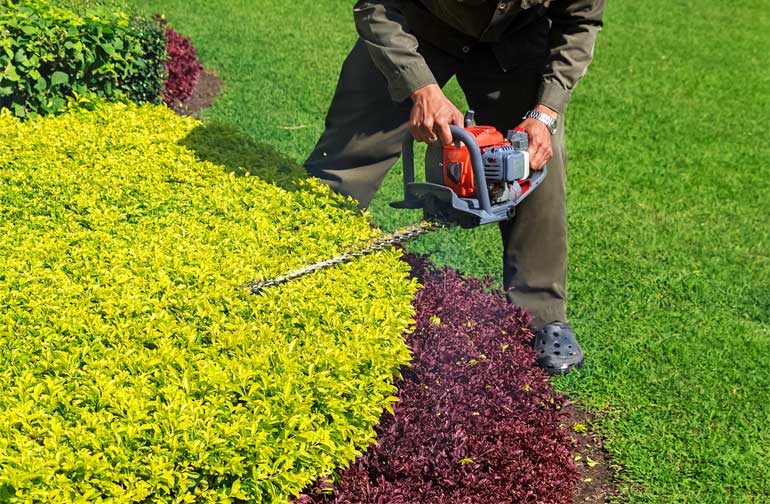The Art of Integrating Nature: Scenic Architecture Principles

Creating an stunning outdoor space is an art that merges imagination, usability, and a deep understanding of nature. Landscape design is not just about planting blossoms and laying down grass; it’s about fusing nature seamlessly with our constructed spaces to create an inviting and cohesive aesthetic. Whether you have a vast backyard or a cozy front yard, the foundations of landscape design can transform your outdoor areas into beautiful extensions of your home.
In this article, we will explore key ideas and techniques that can improve your landscape design, from understanding modern and traditional styles to adding eco-friendly practices. You will uncover useful tips for maximizing limited spaces, selecting the suitable plants, and integrating hardscaping elements that augment your overall design. If you are a beginner looking to begin your landscaping journey or a seasoned gardener seeking inspiration, the art of integrating nature is accessible to everyone. Come along as we delve into the essentials of landscape design that can turn your outdoor dreams into reality.
Vital Landscape Design Tips
Designing a stunning backyard starts with a thoughtful design approach that combines practicality with aesthetics. One key concept is to include diverse plant varieties that grow well in your local conditions. Utilizing get more info of long-lasting plants, seasonal plants, and evergreens can ensure year-round engagement and minimize maintenance. Exploring local flora also benefits local ecosystems but also creates a landscape that seems in harmony with the local environment.
An additional important component of landscape design is the use of hard landscape components like patios, walkways, and retaining walls. These components add structure and can define outdoor living environments. Intentional placement of walkways and seating areas encourages investigation and relaxation, improving the overall purpose of your backyard. Think about adding elements like fire pits or kitchen areas that encourage social events and make your outdoor space more pleasant.

Illumination plays a crucial role in landscape design, as it can dramatically change the atmosphere of your space after darkness falls. Strategically situated lights can accentuate key elements, such as trees or pathways, while creating a cozy and pleasant atmosphere. Using various lighting techniques, such as up-lighting and downlighting, allows you to set different vibes and highlights your landscape's appeal both during the day and in the evening.
Eco-friendly and Affordable Strategies
Designing a beautiful outdoor space does not cost a fortune or damage the environment. One sustainable approach is to select local plants that are well-adapted to your local climate and soil conditions. These plants typically require less water and maintenance compared to non-native species, making them ideal for a low-cost landscape. By choosing native varieties, you also support local wildlife and boost biodiversity in your area.
Another viable approach for a economical landscape design is to add hardscaping elements, such as gravel walkways, stone walls, or terraces made from reclaimed items. These features can decrease the amount of lawn area that requires regular care, resulting in decreased maintenance costs over the years. In addition, hardscaping can provide visual appeal and create functional outdoor spaces for relaxation and socializing.
Utilizing green practices in your landscaping project is also a smart option to save money. For instance, creating compost from organic waste can benefit your soil without the need for costly soil additives. Additionally, exploring xeriscaping, which focuses on drought-resistant plants and conservative irrigation techniques, can significantly lower water bills. By adopting these sustainable and budget-friendly methods, you can create a beautiful outdoor space that is both sustainable and economically feasible.
Tips for Choosing the Right Landscape Style
When selecting a landscape style, think about the overall architecture of your home. The design should fit with the existing features and colors of your house. For example, a modern home may benefit from sleek lines and minimalistic designs, while a traditional home might shine with traditional motifs and lush gardens. Pay attention to the shapes and materials used in your home’s construction, as such elements may guide you towards a harmonious landscape design.
Another important aspect to consider is your personal preferences and lifestyle. Reflect about how you want to enjoy your outdoor space. If you enjoy having gatherings, a formal landscape with patio areas and dining areas might be ideal. Conversely, if you prefer a tranquil oasis for relaxation, focus on creating a serene environment with earthy components like water features or shaded seating. Your landscape should mirror your needs and provide a space that you look forward to spending time in.
Lastly, pay attention to the climate and environmental conditions of your area. Different regions offer unique challenges, such as soil type, sunlight exposure, and water availability. Choose a style that can flourish in your specific environment. Incorporating native plants and eco-friendly practices will not only enhance the viability of your landscape but will also ensure that you have a vibrant and thriving garden that can survive with minimal upkeep.
